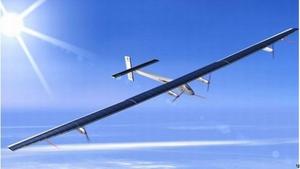Shape of things to come Solar aircraft's first day-and-night flight postponed
First day-and-night flight of a solar-powered aircraft has been postponed because of technical problems; the aircraft, which has a 63-meter wingspan and is as long as an airliner, is powered by 12,000 solar cells and uses lithium batteries to supply energy in the dark

The HB-SIA, showing solar cells on tops of wings and stabilizers // Source: ieee.org
The first manned day and night flight of a solar-powered aircraft has been postponed because of technical problems. The HB-SIA aircraft was scheduled to attempt a 24-hour trip from Payerne airfield in Switzerland yesterday, but the trial was halted after the aircraft’s data transmitter failed.
A spokesperson for Lausanne, Switzerland-based Solar Impulse project told the Engineer that the problem should not set the flight back by more than a few days and the team was waiting to speak to the manufacturer of the part about fixing or replacing it.
The telemetry transmitter is used to keep permanent contact with the plane and supply technical data, flight configuration and positional information. The part, which is about the size of a mobile phone, has already been replaced once, but keeps overheating.
Mission-control coordinator Brian Jones wrote on the project’s blog: “This is the first time in the seven years that this project has been running that we have experienced this kind of disappointment. Let’s hope it will be the last.”
The aircraft, which has a 63-meter wingspan and is as long as an airliner, is powered by 12,000 solar cells and uses lithium batteries to supply energy in the dark.
HB-SIA completed its first test flight in April this year, flying for 87 minutes at a height of 1,200 meters. Once it has completed the 24-hour trip, the team hopes to make the first manned transatlantic solar flight.
